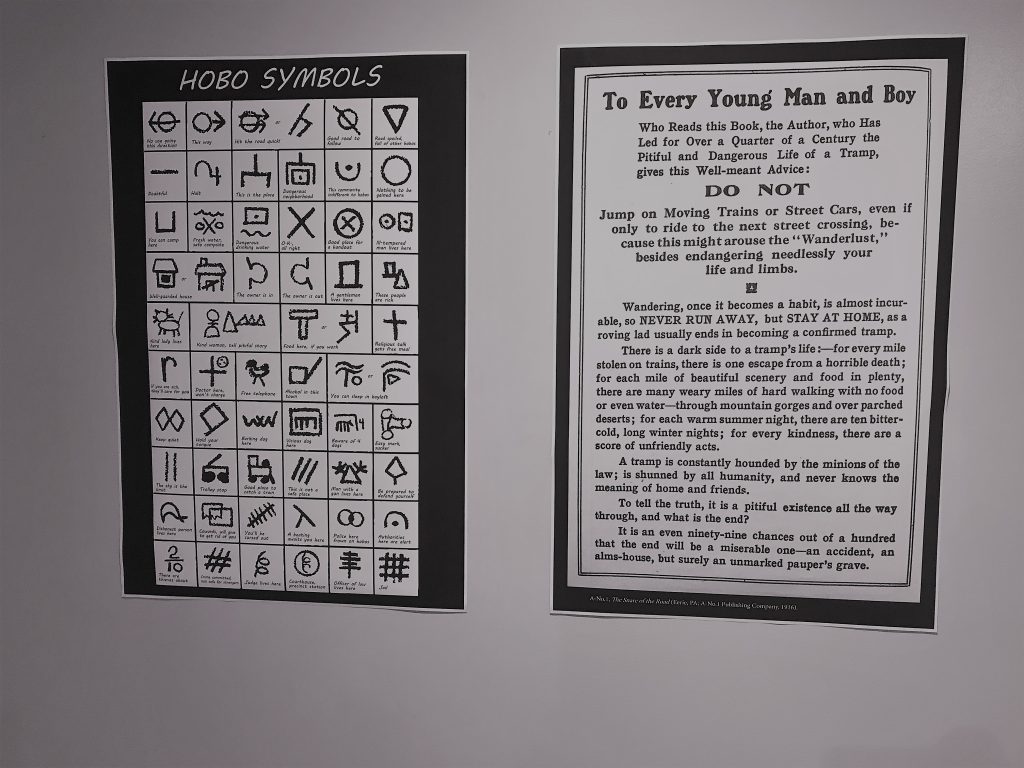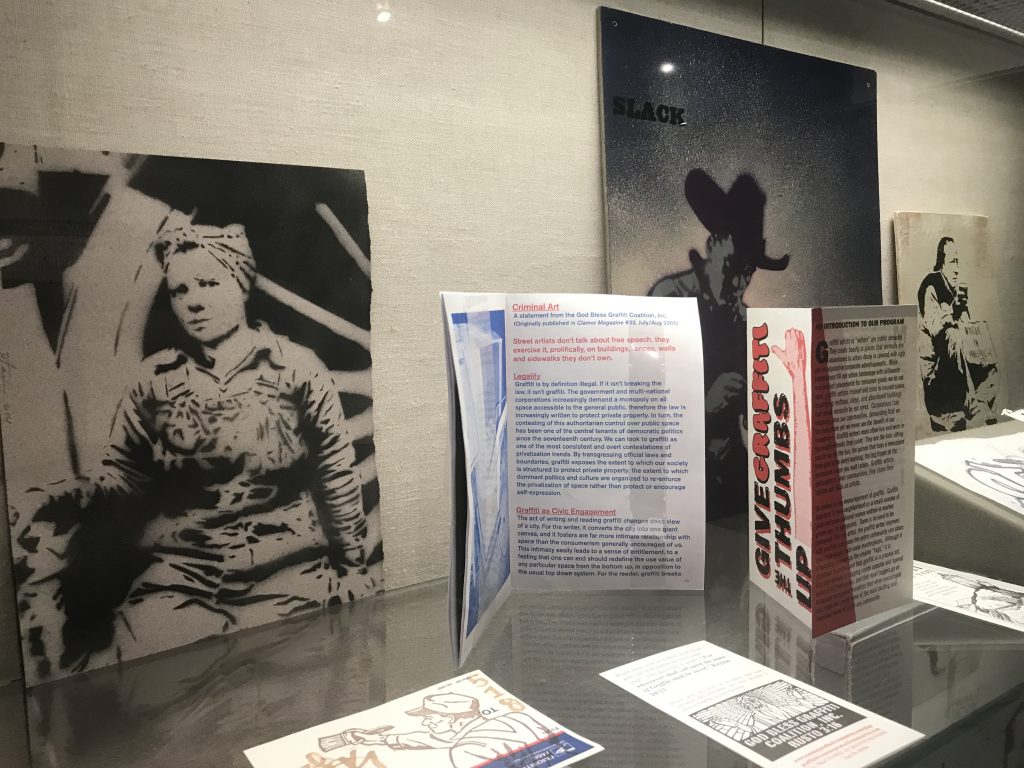The construction of the regional and national railroad system played an important role in the development of the United States. From the industrial revolution to the westward expansion of the nation, Americans benefited from the railroad in many ways, including the creation of folklore tied to the trains.
Among the legendary figures that emerged from the culture of the railroad dating to the mid-19th century is the hobo, a character who appears in novels, song, and film. Drawing from several collections in the Archives & Special Collections at the UConn Library, an exhibition in the Thomas J. Dodd Research Center Gallery, called, “There & Back Again: A Hobo’s Tale,” examines the nature of hobo culture.
The exhibition includes copies of The Hobo Times, a forum for news, poetry, photos and other information for itinerant travelers riding the rails from the Alternative Press Collection; photos of trains and railroad scenery from the New York, New Haven & Hartford Railroad Collection; graffiti, symbology, and how-to-manuals from the David Peters Railroad Collection; and music from the Charters Country Blues Archives played in the gallery by noted blues artists, including Blind Willie McTell, Bukka White, Son House, and Charlie Segar.
A 2005 documentary film, “Who Is Bozo Texino?” by Bill Daniels, which traces the search for the world’s greatest boxcar graffiti artist, will be presented on Thursday, Feb. 6 during a reception from 7 p.m. to 9 p.m.
“There & Back Again” was curated by archivist Graham Stinnett, who says the image of the bindle-staffed American folk hobo has gone through many permutations, from the wandering soldier and freedman in the post-Civil War era carrying a hoe and referred to as “boy” or “Hoe-boy,” one of many possible origins of the term “hobo.” He combed through various collections in the UConn Archives holdings to find materials to tell a different kind of railroad story.
“The basis for this exhibition came from the drive to find an alternative approach to our immense railroad collection,” says Stinnett. “I looked for a perspective from the back of the railroad, a view seen from the jungle, the fence hole and the boxcar. I began to focus in on the remnants of how this culture documents itself and how it has survived. The colorful and individualistic nature of hobo culture stands off the page and print with its resonating lived experiences from the sorrowful to the liberating.”

One source that contributed heavily to the exhibition was the David Peters Railroad Collection, of which the hobo material is a very small slice of a lifelong rail fan’s accumulated artifacts. Photography books, travelogues, and copies of The Hobo Times newsletter from 1987-2000 provide a first-hand account of a defunct organization for the recreational lover of the train.
In the spring 1992 edition of The Hobo Times, for example, a column entitled “Hobo History” notes: “In the old days, hobos traveling across American by boxcar were carriers of news and stories for millions of people who lived in towns and farms along the rails. Many people’s first impressions of the ‘big world’ out there came from the hobos.”
The exhibit includes several editions of books by A No. 1, the famous tramp who claims to have traveled 500,000 miles for $7.61, with titles such as “The Ways of the Hobo” and “The Trail of the Tramp.”

Among the materials in the exhibit are selections from “The 100 Commandments of Riding the Rails,” including such advice as:
• Bring a backpack you can throw around and sit on.
• Every rail fence has at least one hole in it.
• Bring food that is light, will keep, and doesn’t need cooking.
• Use discarded cardboard (1000-mile paper) to cushion your ride and keep you clean and insulated.
A chart of “Hobo Symbols” in the exhibit provides a key to a communication system understood by travelers in railyards across the nation, warning of hazards, safe areas, and places for seeking help; for instance, a cross with a smiley face in the upper right corner indicated a doctor who would provide free care, or two intersecting circles, noting “police here frown on hobos.”
“There & Back Again: A Hobo’s Tale” continues through Feb. 28 at the Thomas J. Dodd Research Center, 405 Babbidge Road, Storrs. Hours are Monday through Friday from 9 a.m. to 4 p.m. For more information, visit the website of Archives & Special Collections.



